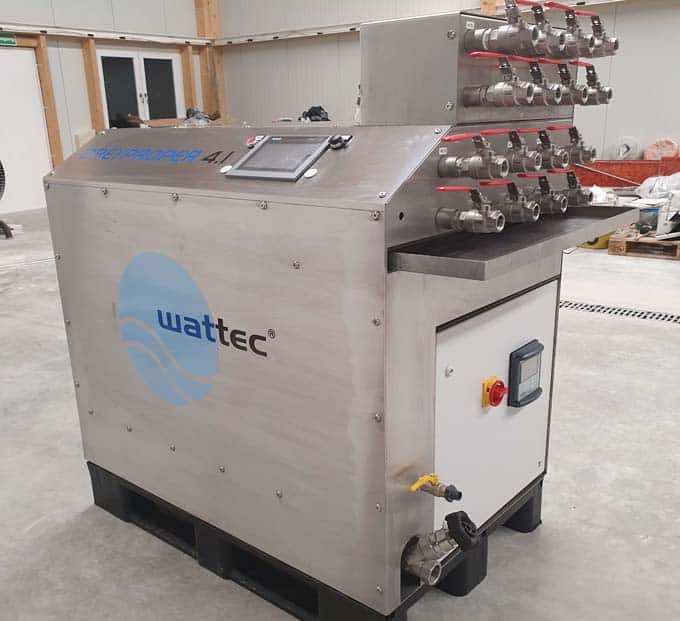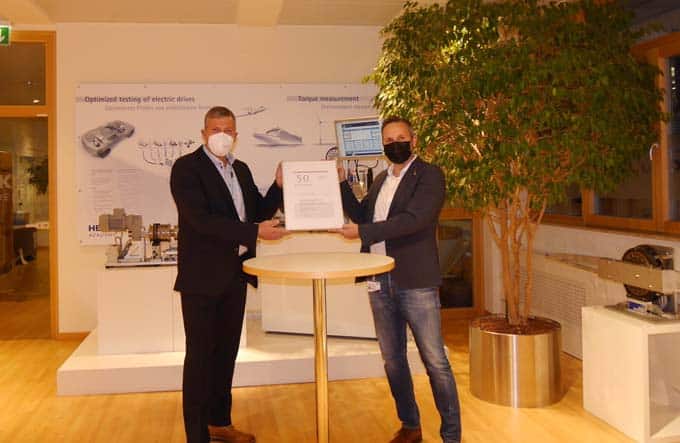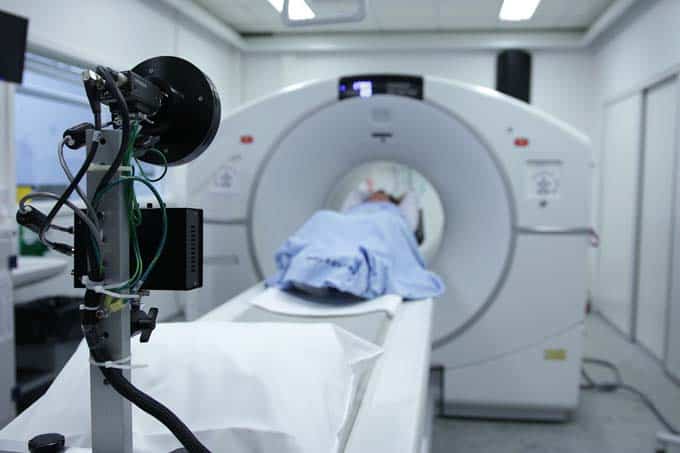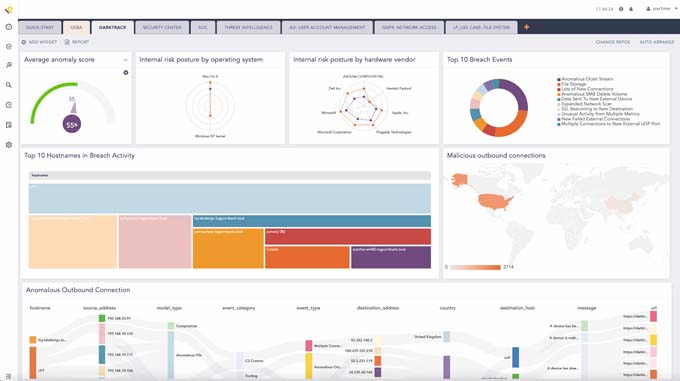Cleaning of cooling channels in the plastics industry
In the ducts of injection molds, corrosion or limescale deposits form an insulating layer over time that reduces the cross-section of these ducts. A new, patented cleaning system uses an optimized mechanical compressed air process to remove stubborn deposits and completes the cleaning process in half the time.

If the cross-sections in the lines of injection molds are reduced as a result of contamination, it is no longer possible to dissipate sufficient heat. This makes regular cleaning of cooling channels on injection molding equipment necessary. Previous chemical methods for cleaning often have to be carried out manually, with contact with the aggressive cleaning substances posing an increased health and safety risk for employees. Therefore, wattec GmbH offers the Dreyproper, a fully automatic, mobile cleaning aid that removes such deposits quickly and safely. Now the fourth generation of the cleaning device has been revised once again in terms of cleaning performance and user-friendliness.
Optimized cleaning of cooling channels
The new Dreyproper 4.1 version removes all deposits in an injection mold by simply connecting the device to its cooling channels. This avoids direct contact of personnel with cleaning agents, as is common with conventional manual methods. Subsequently, the first thing that activates is the drinking water flooding, then the circulation pump is switched on and fresh water is pumped through the channels to determine if there is a leak in the mold. If no leakage was found, the unit begins to introduce the cleaning chemical and starts the actual cleaning process. "To ensure that even layers of sludge that have sometimes formed on lime or rust in the pipes are not only loosened but also removed, the so-called rampling process complements chemical cleaning," explains Joachim Rohmann, managing director of wattec GmbH. "In this mechanical cleaning method, air bubbles of different sizes act as air brushes and loosen the deposits and incrustations from the sewer wall." Throughout the process, various sensors monitor and document the flow rate as well as the cleaning performance. This can be viewed via touch screen; likewise, the control of the automatic cleaning is carried out via this console.

Double number of cleaning channels reduces process time
During the revision of the Dreyproper to variant 4.1, the focus was on improved cleaning economy. An optimized geometry now allows the connection of eight instead of four cooling channels for flow-monitored rinsing. At the same time, more cleaning liquid can be pumped through. This is fed into the channels via a multistage, frequency-controlled centrifugal pump that can generate high pressure. A compressed air connection is mounted behind it, which is used to inject air bubbles into the volume flow of cleaning agent. "Via a fully automatic change in pressure, the air bubbles are alternately enlarged and reduced," Rohmann explains. "The resulting flow swirls the air bubbles and causes them to bounce against the deposits again and again. In this way, even stubborn incrustations are detached and entrained." In this way, the inner surface of the cooling channels can be brushed over a large area, so that both insulating sludge layers and the deposits underneath are removed.
Following the entire cleaning process, the chemical is neutralized with a second solution and then rinsed out with fresh water. This procedure ensures that all chemical residues are removed from the injection mold. An additional heat exchanger rapidly dissipates the heat generated. As a result, the cleaning cycle can be started up to 45 minutes faster. "To further reduce system downtimes, the channels can be automatically blown out via the compressed air connection at the end of cleaning," says Rohmann. "This removes any remaining liquid from the injection mold that would otherwise have to be removed via an additional work step. It is immediately clean and dry." After that, all connections of the Dreyproper are dismantled from the respective injection mold and the cleaning device, which now contains the neutralized solution, is removed. The injection mold is immediately ready for use.
Test phase and on-site consultation
To convince themselves of the efficiency and simple operation of the Dreyproper 4.1, users can also rent the device on a trial basis. The cleaning experts from wattec will be happy to provide advice, for example to help optimize the cooling water. "These appointments are also extremely valuable for ourselves, as we receive feedback directly from the field," adds Rohmann. "The experience gained is naturally incorporated into the continuous improvement of the cleaning programs and their operation, which is reflected in the current variant." With these personal contacts, the manufacturer ensures that the injection molds are always optimally cleaned and the Dreyproper is always state of the art.
Further information on the Internet at: www.wattec.de



















